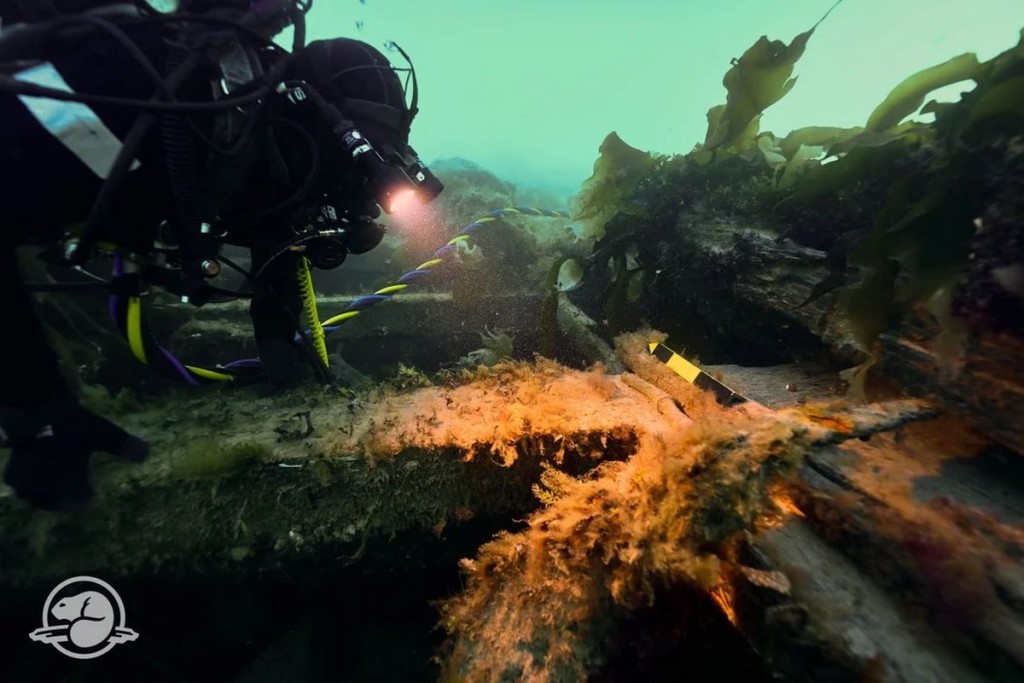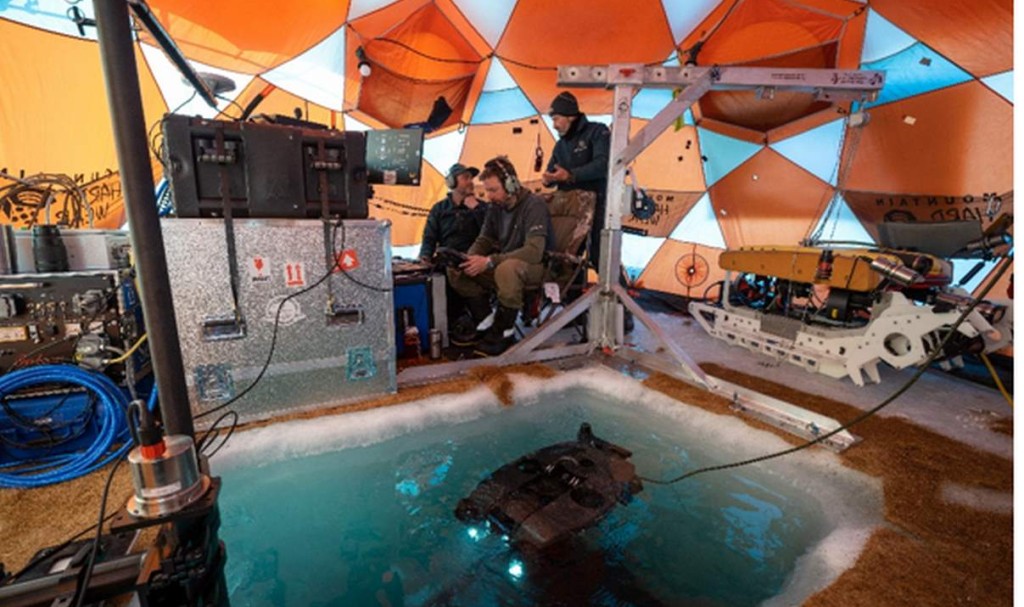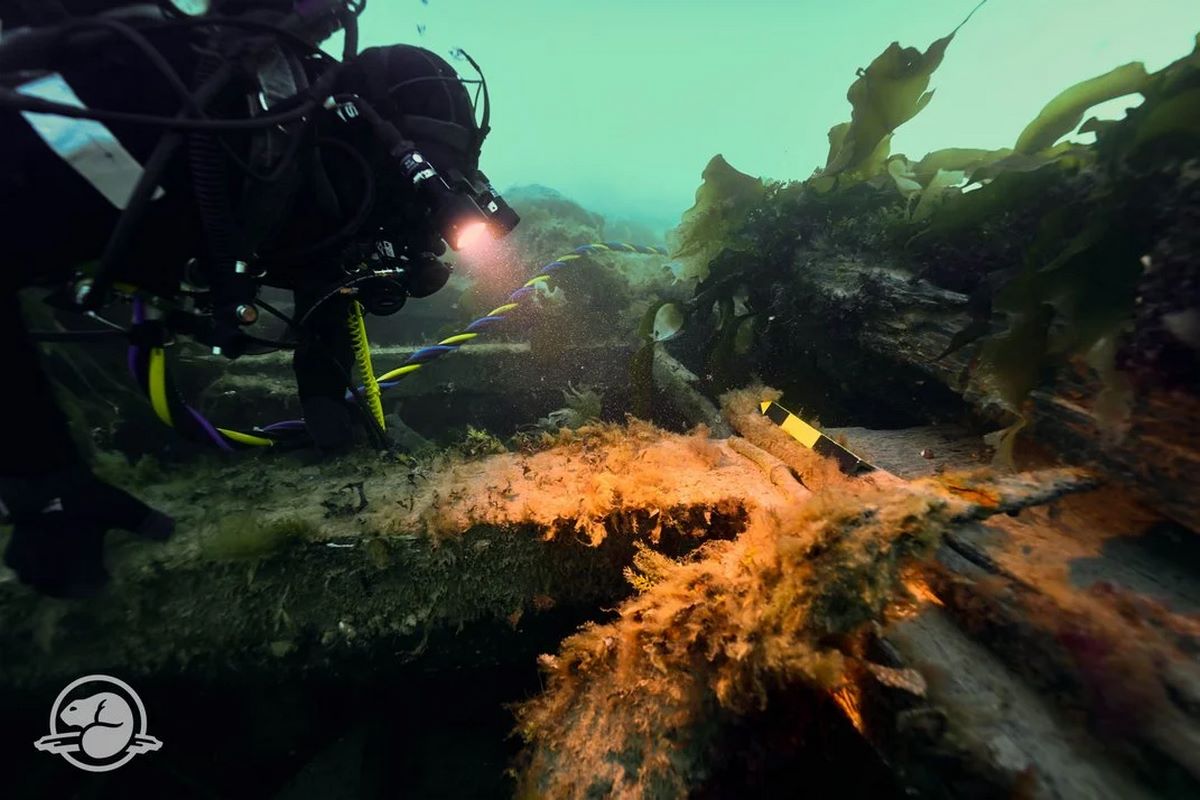
8 years after Arctic researchers discovered the lost wreck of HMS Erebus, the team has finally been able to see it with their own eyes and recover hundreds of artifacts from its ill-fated search for the Northwest Passage.
Setting sail from Great Britain in 1845 and captained by the famed polar explorer Sir John Franklin, HMS Erebus is in pristine condition under the ice off King Williams Island in Nunavut, Canada’s northernmost territory.
Franklin’s voyage was accompanied by the HMS Terror, found nearby two years after Erebus. They were abandoned in heavy sea ice with all 129 souls lost in what was the worst disaster in the history of the British Navy’s polar exploration.
In September 2022, archaeological research operations and excavation resumed at HMS Erebus based from the RV David Thompson and support barge Qiniqtirjuaq, just one aspect of a large assistance operation from the local Inuit people. The team completed 56 individual dives over the course of 11 days, reports Parks Canada.
Among the artifacts pulled from what Canadian Environment Minister Steven Guilbeault said were “some of the best-preserved wooden wrecks in the world,” were a drafting table tool set, serving dishes, an embossed leather billfold, a toothbrush, lieutenant’s epaulets, and an eyeglass lens, among dozens of other items.

The two wrecks are considered National Historic Sites, and they are jointly-protected and managed by Parks Canada and the Inuit Heritage Trust.
MORE ARCHAEOLOGY: Historians Stunned: Uzbekistan Nomads Supplied a Third of the Bronze Used Across Ancient Mediterranean
HMS Erebus is in shallower water, and easier to study. It’s been designated the more important of the two wrecks considering it was the flagship, but expeditions via unmanned submersible in 2016 on HMS Terror turned up important information on what might have happened.
The Guardian, reporting at the time, quoted Adrian Schimnowski, the Arctic Research Foundation’s operations director as saying that the Terror was sitting pretty level on the seafloor, suggesting her fate was gentle and not sudden or jarring. A long rope was discovered running through a hole in the gunwales, suggesting an anchor may have been weighed at the time the ship went down.
MORE SHIPWRECKS: Priceless Lost Jewels From Legendary Maravillas Shipwreck Are Finally Found in Bahamas
“This vessel looks like it was buttoned down tight for winter and it sank,” said Schimnowski at the time. “Everything was shut. Even the windows are still intact. If you could lift this boat out of the water, and pump the water out, it would probably float,” he said, adding that three of the four tall window panes of the captain’s cabin were still intact.
The Erebus was found to be a little worse for wear than it was in 2014. It’s thought that storms and reduced icepack coverage has led to more erosion. The team explored the second lieutenant’s quarters and the steward’s galley, and is currently exploring what it believes to be the third lieutenant’s quarters.
WATCH the 5-minute presentation of the excavation (skip to 1:50 to see the ship)
DROP This Story’s Anchor On Your Friends’ Social Media Pages…




















